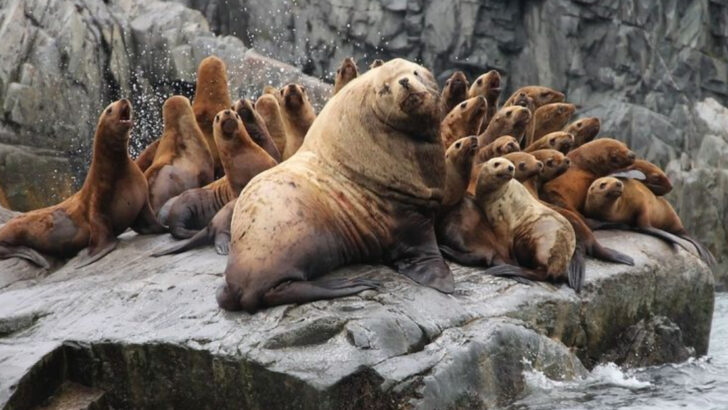The largest sea lion ever found in the U.S. is a beast of legend.
Imagine a creature so enormous it could make you rethink what you know about ocean giants—Steller sea lions are not just big, they’re colossal.
These majestic pinnipeds rule the Pacific coast, commanding the waters and rocks they call home.
But their size is only the beginning. From their wild migrations to their fierce hunting tactics, there’s so much more to these creatures than meets the eye. Get ready to discover 13 jaw-dropping facts about the true king of the sea lions!
The Immense Size
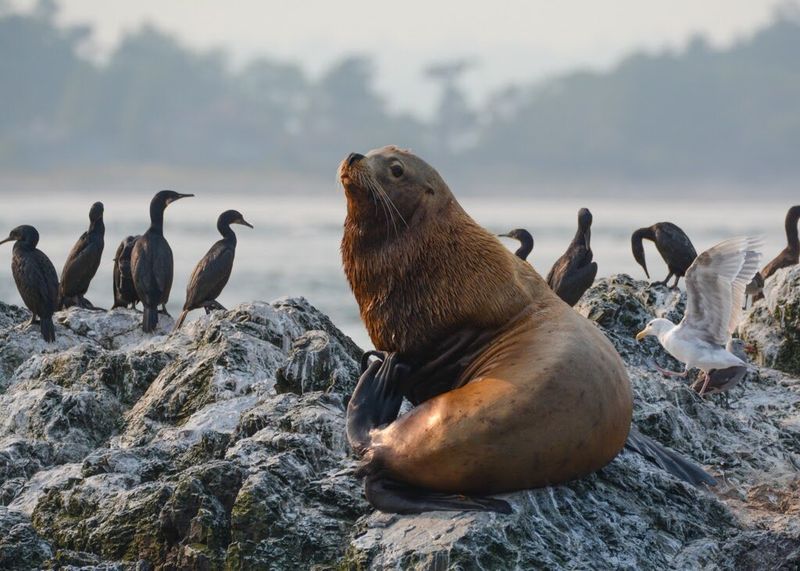
With a size that defies belief, this Steller sea lion measured an astonishing 11 feet in length, making it the largest recorded in U.S. history. Imagine a creature as long as a small car, lounging gracefully on the rugged coastline. These sea lions are not only known for their impressive length but also their massive weight, which can reach up to 2,500 pounds. This particular giant set records, capturing the attention of marine biologists and enthusiasts alike. Its sheer size is a testament to the rich and diverse ecosystem that supports such majestic marine life.
Habitat and Range
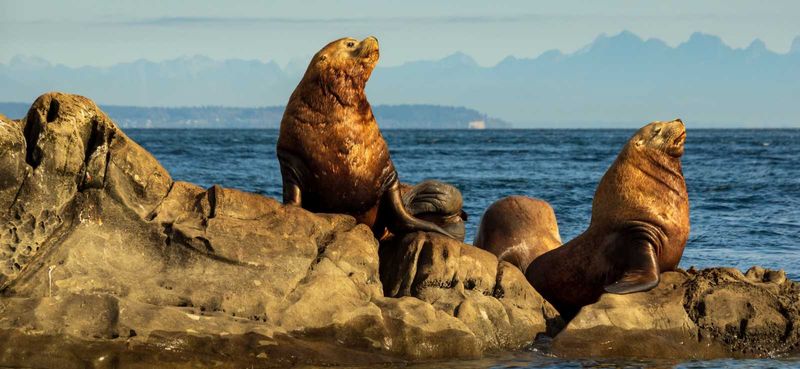
Steller sea lions are native to the chilly waters of the North Pacific Ocean, gracing the coastlines from Alaska to California. Their preferred habitat includes rocky shores and remote islands where they can haul out safely. This particular sea lion was found in the remote stretches of Alaska, where the pristine environment provides abundant food and minimal human disturbance. Their expansive range highlights their adaptability and the importance of conserving their natural habitats for future generations to appreciate. Protecting these areas ensures the survival of such incredible marine mammals and fosters biodiversity in our oceans.
Distinctive Appearance

Captivating with their striking appearance, Steller sea lions possess unique features that distinguish them from other marine mammals. They have a robust, muscular build, with a thick neck and a large, rounded head. Notably, their vibrant eyes and long, sensitive whiskers add to their allure. The fur is typically a light tan to reddish-brown, which can appear almost golden under sunlight. These physical traits not only aid in their survival but also make them a favorite subject for wildlife photographers and researchers, eager to capture their beauty in its natural habitat.
Diet and Hunting Behavior
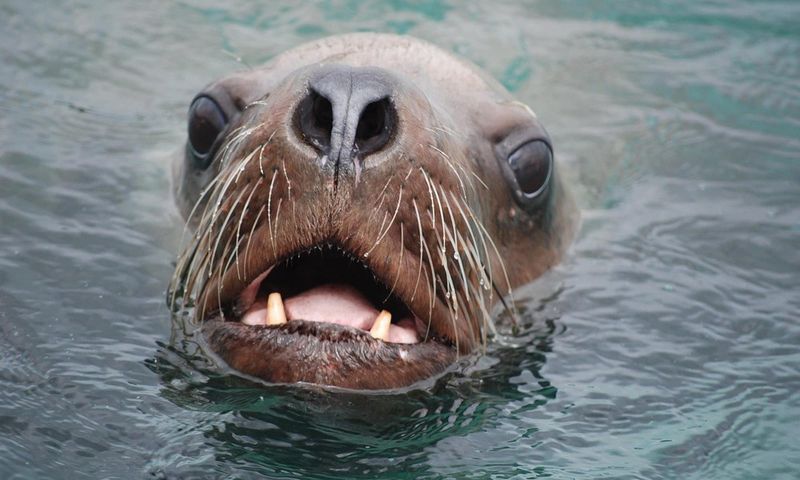
Diet plays a crucial role in the growth and size of Steller sea lions. Their diet mainly consists of a variety of fish and cephalopods, including herring, mackerel, and squid. This colossal sea lion demonstrated remarkable hunting skills, diving deep into the ocean and swimming swiftly to capture its prey. Agile and efficient, these sea lions are apex predators in their environment, contributing to the balance of the marine ecosystem. Observing their hunting behavior provides insights into their role in the food chain and their ability to thrive in diverse environments.
Social Structure

Steller sea lions are highly social creatures, often seen gathered in large groups on rocky outcrops. These gatherings, known as rookeries, are vital for mating, birthing, and social interaction. The largest recorded sea lion was no exception, often found in the company of others, engaging in playful behaviors and vocalizations. Their complex social structure involves a clear hierarchy, with dominant males, known as bulls, leading the groups. Understanding their social dynamics is key to appreciating their communal living and the bonds that form within these intelligent and expressive animals.
Conservation Status
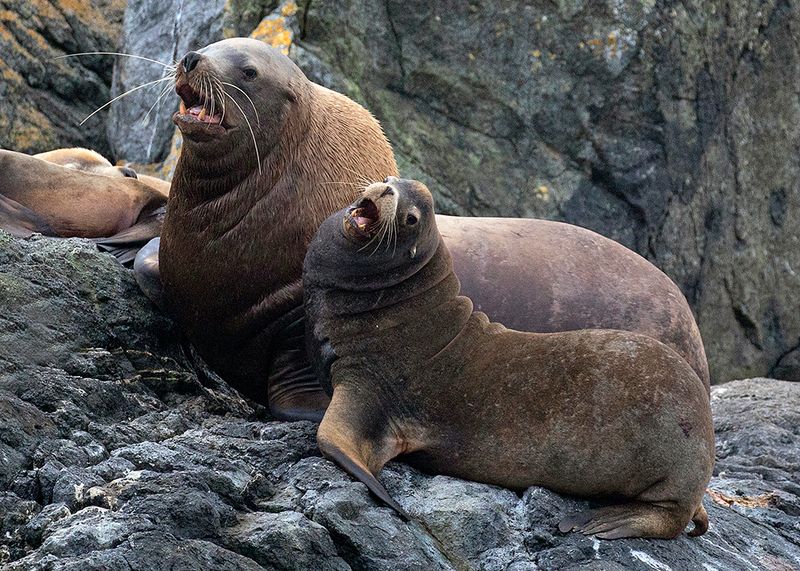
Despite their grandeur, Steller sea lions face numerous threats that have led to a decline in their populations. They are currently listed as near threatened, with certain areas experiencing more severe declines. This particular sea lion’s discovery sparked conversations about conservation efforts needed to protect these magnificent creatures. Human activities, such as overfishing and climate change, pose significant challenges to their survival. Conservation organizations are actively working to monitor populations, protect critical habitats, and raise awareness about the importance of preserving marine biodiversity.
Reproductive Traits
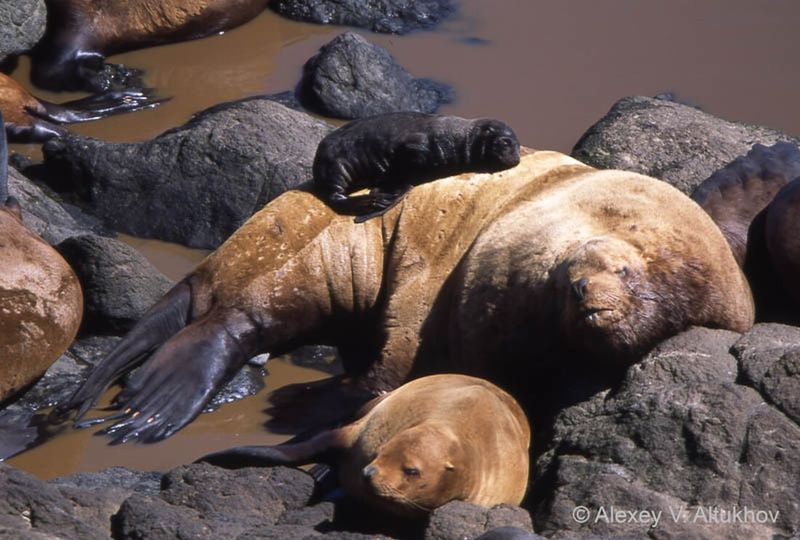
Reproduction is a key aspect of the Steller sea lion’s life cycle. Females give birth to a single pup after an 11-month gestation period. This heartwarming scene of a mother with her pup is a reminder of the nurturing aspects of these animals. The largest sea lion’s girth and health were likely influenced by successful breeding and abundant resources. Pups are cared for by their mothers, who provide milk and protection during the early vulnerable stages of life. The reproductive success of the species is essential for maintaining their populations and ensuring their continued existence.
Vocal Communication
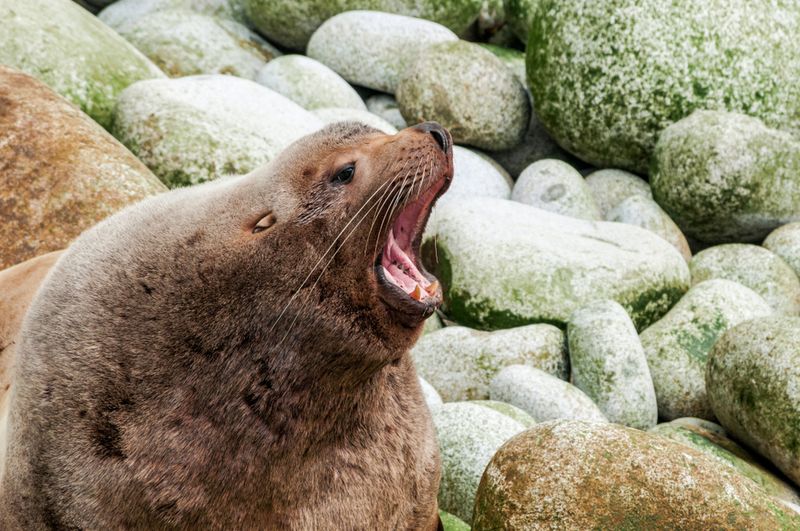
Steller sea lions are known for their loud and distinctive vocalizations, which are essential for communication within their social groups. The sounds range from deep roars to sharp barks, each serving a specific purpose, from establishing territory to attracting mates. The largest sea lion’s vocal presence was notable, resonating across the rocky shores. These vocal displays are not only a vital part of their social interactions but also contribute to the dynamic soundscape of their coastal environment. Researchers study these vocalizations to learn more about their communication and behavior.
Longevity and Life Span
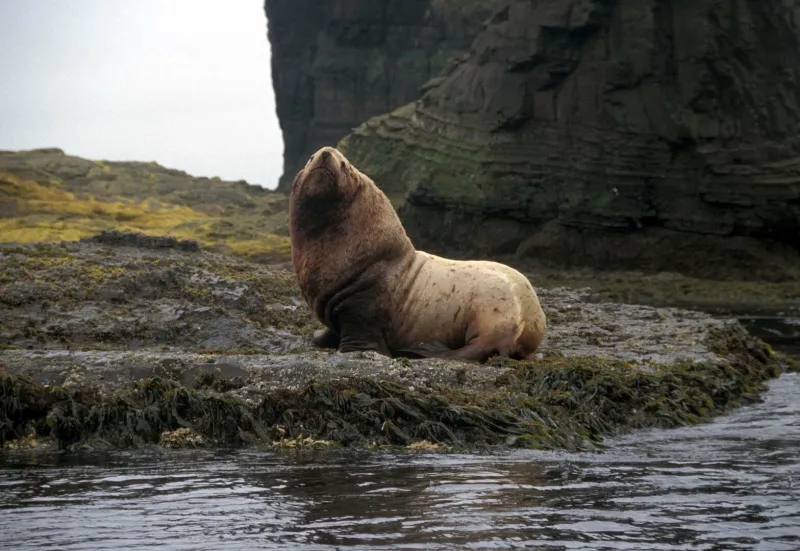
Steller sea lions can live up to 20 years in the wild, with some individuals reaching even older ages under optimal conditions. The largest sea lion’s impressive size suggests it lived a full and healthy life, potentially reaching the upper limits of their natural lifespan. Longevity in these animals is influenced by factors such as diet, social structure, and environmental conditions. Observing older sea lions provides valuable insights into their life history and the challenges they face as they age. Their enduring presence in the marine ecosystem is a testament to their resilience and adaptability.
Impact of Climate Change

Climate change is a growing concern for the future of Steller sea lions, affecting their habitats and food sources. The largest sea lion’s habitat in Alaska is particularly vulnerable to these changes, with melting ice and shifting prey distributions posing significant challenges. As the climate continues to warm, the delicate balance of the marine ecosystem is threatened, impacting the survival of these magnificent animals. Efforts to combat climate change and mitigate its effects are crucial in ensuring that Steller sea lions continue to thrive in their natural habitats.
Human Interaction and Impact

Human activities have a profound impact on Steller sea lions, both positively and negatively. While some interactions, like ecotourism, raise awareness and support conservation, others, such as overfishing, threaten their survival. The largest sea lion’s discovery highlighted the need for sustainable practices that protect marine life. These creatures often interact with humans, sometimes approaching boats out of curiosity. Balancing human interests with the preservation of natural ecosystems is a challenge, but it is essential for the coexistence of humans and marine wildlife. Efforts to promote sustainable fishing and responsible tourism can help protect these incredible animals.
Cultural Significance
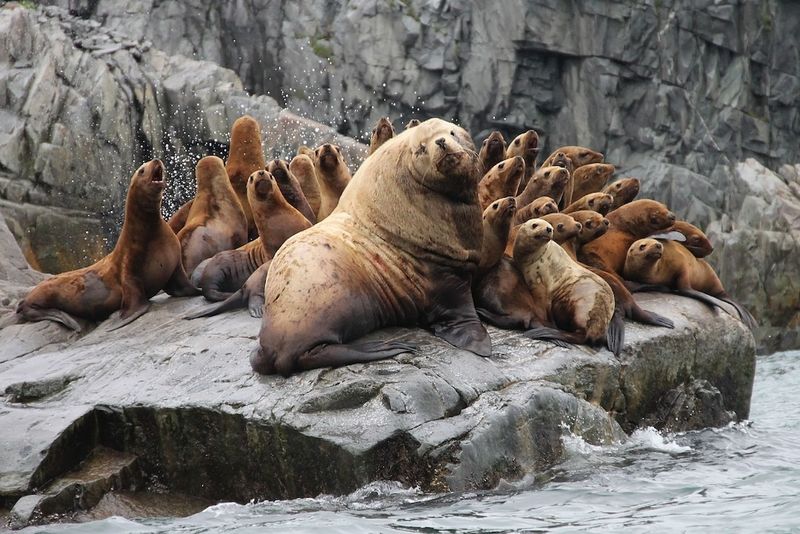
Steller sea lions hold cultural significance for many indigenous communities along the northern Pacific coast. They are often featured in native art and mythology, symbolizing strength and adaptability. The largest sea lion’s presence in local stories and traditions underscores its importance to these cultures. This deep connection highlights the need for preserving both the species and the cultural heritage associated with them. By respecting and integrating indigenous knowledge and practices, conservation efforts can be more effective and inclusive, ensuring that future generations can appreciate the rich cultural history and natural beauty of Steller sea lions.
Research and Monitoring
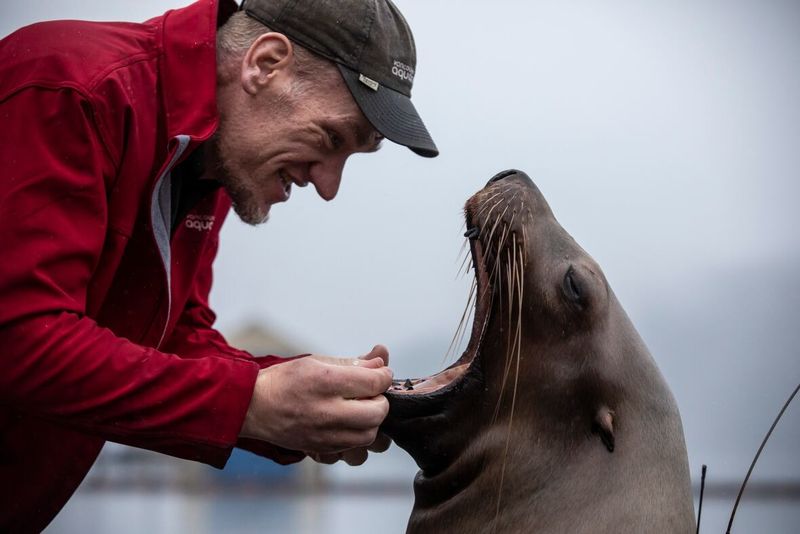
Ongoing research and monitoring are vital for understanding and protecting Steller sea lions. Scientists use a variety of methods, from tagging individuals to studying their behaviors, to gain insights into their lives. The largest sea lion’s documentation provided valuable data, contributing to broader studies on marine mammal health and ecology. Such research aids in identifying trends and threats, informing conservation strategies. Collaboration between researchers, governments, and local communities is essential to ensure these majestic creatures continue to thrive. Their study not only enhances our understanding of marine ecosystems but also inspires future generations of conservationists.

